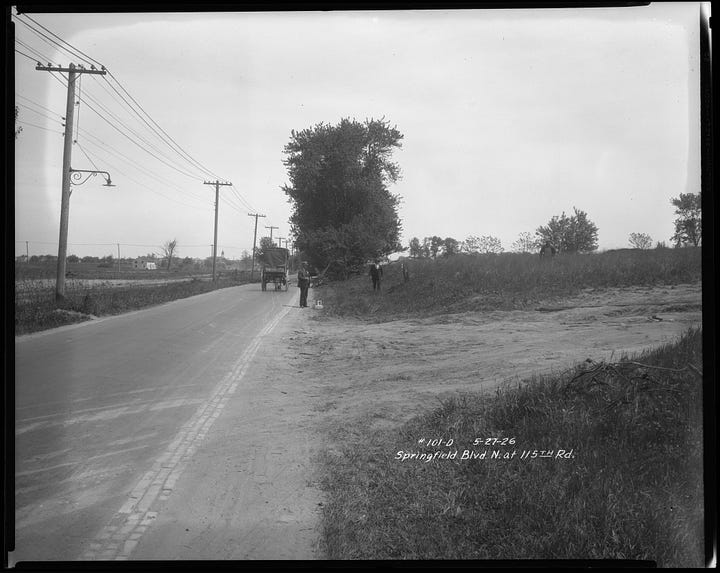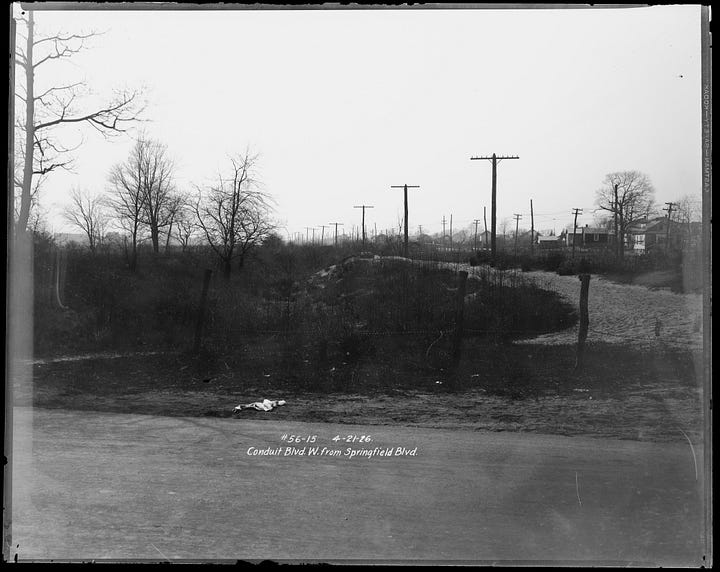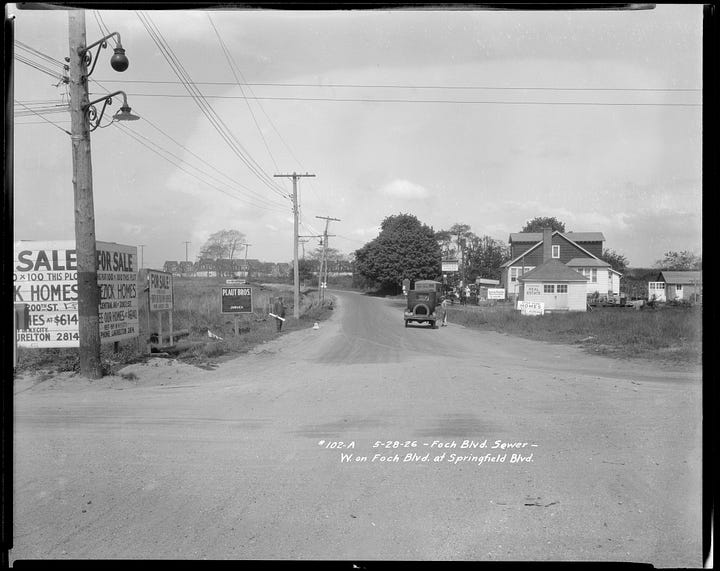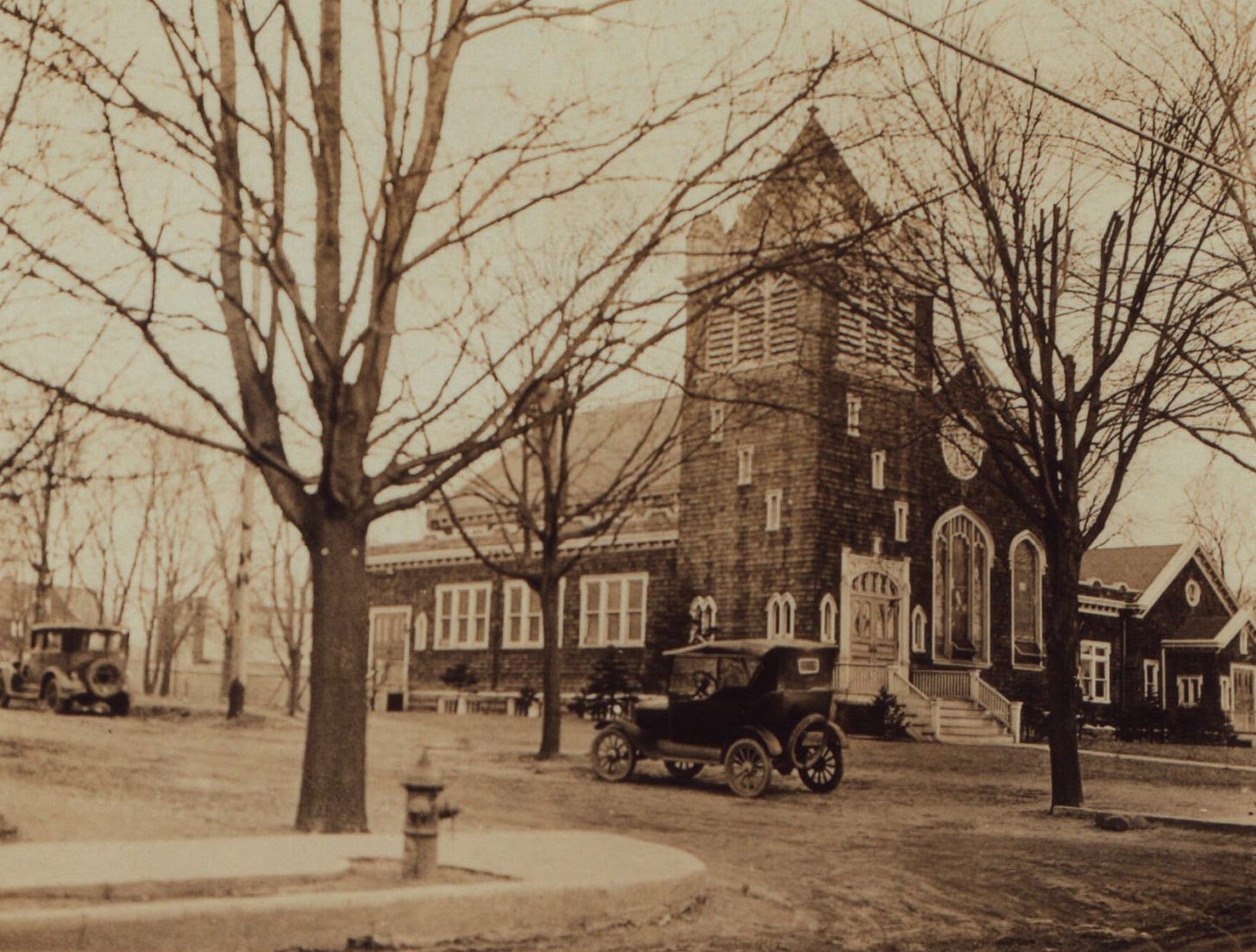If you have not read part 1 “Late on a Saturday Night” or part 2 “The Baldwin Church Visit” you might want to read them first.
Despite the advice to go as civilians given by the Exalted Cyclops at their meeting the night before, a dozen or so men adorned the white robes of the Ku Klux Klan during a visit to the First Presbyterian Church in Springfield the night of Sunday, December 16, 1923. Leaving their faces bare, they escorted the mysterious character known to the public as the “Human Dynamo” into the church and down the aisle to the pulpit where he gave a blistering speech that was reported in the dailies, including the New York Times. Essentially, it was a vicious and bigoted rant against New York Governor Al Smith, whom he called “Alcohol Al” and a “gumshoe politician.” He said the governor was ignorant about civics because he attended parochial schools where he learned only about the history of the Catholic Church. The Human Dynamo’s speech was repeatedly interrupted by applause from the 500 or so in attendance.
For the past months, this Human Dynamo had been appearing—as if from nowhere—at Klan events from Niagara Falls to Bay Shore. These rallies often included state Klan leaders and other organizers, such as the Rev. Oscar Haywood or Major E. D. Smith, the King Kleagle of New York. Sometimes he appeared alone in church visits such as the one at Springfield, while other times the “national lecturer” from the Klan, as he was often billed, headlined larger rallies in places like Huntington and Happaugue, just to name two. He appears to have had a standard speech, where first he would extoll the Klan before railing against immigrants and Governor Smith. His venomous power was bolstered by his moniker and the mystery surrounding his identity. A search of early 20s usage of “human dynamo” reveals its association with power, energy, electricity, and, in the case of its use as a descriptor of a man, indefatigable stamina.
The crowd at the church in Springfield was told he had come from Oregon, that he had organized the Klan there, but there is no evidence for such a story. In his speech he mentioned Louisville and he was said to have a southern accent. In reality, the “Human Dynamo” was a man named Irwin R. Hignett, a British-born kleagle who made such a name for himself in Indiana and Ontario that he toured New York using a nickname. His speech at Springfield, a section of Queens that still had farms, was the first recorded instance of him appearing in New York City.
It’s not known how many of the robed men at Springfield were from Richmond Hill No. 30. Nor is it known how many followed instructions to attend the services there without regalia. Why did the Exalted Cyclops suggest they go in civilian attire the night before and why did several of them ignore the suggestion? No one knows the answer to those questions either. We can surmise, however, that in the wake of the burning of the Methodist Protestant Church in Baldwin Harbor only three nights before, there was some concern. So much concern that police protection was requested by church leaders.
One simple explanation for the warning by the Exalted Cyclops is that the First Presbyterian Church of Springfield was not a “Klan church” in the way that the Methodist Protestant Church in Baldwin Harbor was. Unlike Rev. Slater’s vigorous support for the Klan, Rev. MacDonald had not spoken in their favor, at least not before their visit on December 16. It’s hard to believe that a member of Slater’s church in Baldwin could have been unaware of his activity, whereas the emergence of a visit by the Klan to their church as a “good idea” must have been extremely disturbing to many at First Presbyterian in Springfield. Future posts in this series will show how church members associated with the Richmond Hill Klan conducted Boy Scout meetings at First Presbyterian Church in Springfield and others soon started their own Klan unit, known as “Springfield Steadfast” Klan No. 177. In any case, the visit by the Klan less than two weeks before Christmas triggered opposition within the congregation.
In those years, Springfield was a fast-developing village anchored by the nostalgia of its grand farmhouses, which by 1923 had seen better days. The village was surrounded by farmland, as distant from evil Gotham as Kansas from Oz. Between the village of Springfield and Queens Village to the north, Jamaica to the northwest and Valley Stream to the east, coastal inlets and meandering unpaved lanes intersected dusty fields inspired by ocean breezes, a bountiful outwash once footed by the Rockaway people.




The story of the Klan visit to First Presbyterian in Springfield was told in several newspapers, including the New York Times, which claimed 5,000 were in attendance. That number was likely based on the initial reporting of Brooklyn’s Standard Union, which quickly revised its original report of 5,000 to 500, claiming a printing error. It’s also possible the larger number came from the Klan itself, which tended to exaggerate attendance and membership. Evidence suggests some papers printed Klan estimates and figures. Apparently, Tablet editor Patrick Scanlan called the Times desk and was told that there would be an investigation into the matter. Scanlan in his editorial claimed that the church had seating for 220 with room for 75 more. An independent account of the capacity of the church put it at 350, with a “choir loft,” an attached gymnasium and Sunday school room accommodating 800 total, so 500 seems reasonable if still a bit inflated.
According to printed reports, fourteen robed Klansmen entered the First Presbyterian Church of Springfield as the Rev. Dr. William MacDonald led the congregation in singing “Stand Up For Jesus.” Behind Hignett and leading the others down the aisle were two Klansmen carrying American flags and another holding an “electrically lighted cross.” They all took seats that had been held for them and then Rev. MacDonald introduced the “Human Dynamo,” not revealing his name but highlighting his credentials as a Klan organizer out west. After some basic Klan apologetics boilerplate, he launched into his attack on Governor Smith, a leading contender for the Democratic Party nomination for the presidency in 1924.
Following the May 1923 repeal of the Mullan-Gage Act, the state’s Prohibition enforcement mechanism, “dry” opposition to “wet” Governor Smith intensified, and some drew connections between his lack of enthusiasm for Prohibition enforcement and his Catholicism. These attacks would grow even more intense the following year and during the next national election cycle four years later. Hignett played off this Protestant bigotry, suggesting among other things that Smith was loyal to Rome and his “rum soaked friends” but not the Constitution. “Thank God,” Hignett told the audience at Springfield, referring to exaggerated claims of Klan membership, “there are 6,000,000 people in the United States who have pledged their lives that no son of the Pope of Rome will ever sit in the presidential chair.”
A consistent foil to the Klan in New York in the 1920s, Scanlan pointed out the small size of the church before turning to ridicule:
“For this reason it would be quite difficult for 5,000 to get in, even admitting all were very narrow, and a subway push was in action. Moreover, with 5,000 present, in a church which holds less than 300 it would not be possible to keep the white gowns clean or to prevent the fiery cross from burning someone’s whiskers.
“One of those present on last Sunday evening states that the meeting was well advertised in advance, the night was clear, and a high-class program was arranged. All this helped to bring out a congregation which filled the church, close to 300 being present, which is about as many as one sees around the curiosity department in Woolworth’s one of these days or on one floor of an overcrowded apartment in New York. Of the less than 300, almost 50 were members of Rev. Mr. McDonald’s (sic) regular congregation. The rest were the usual camp-followers or circus boys to travel around either to watch the show, including the animals, freaks and clowns, or to sell pink lemonade, $10 subscriptions, etc., to the easy marks. Most of the religious members of the congregation stayed at home so as to help their church.
“The Human Dynamo,” or as better known, “The Human Wind Bag,” supplied most of the gas for the evening. The same chestnuts were warmed over and the usual hymn of hate was sung in a church supposed to be Christian. Toward the end he said the 6,000,000 “patriots” in the Klan would save America. Well, if 5,000 of them were present in the church which holds less than 300, then why not put the 6,000,000 up to 10,000,000 and save America quicker?”
In early November, the voters of Queens County elected Richard S. Newcombe, a noted lawyer and Democratic public servant, to the position of District Attorney. Although the Klan had been meeting in Manhattan and Brooklyn for at least a couple years, not much had been heard from them in the city since Mayor Hylan supposedly sent them away and Detective Geagan of the Bomb Squad made some arrests after a meeting in Brooklyn early in the year. The impression was that all was quiet on the Klan front in New York City. Despite the intense activity documented in the local papers, the Klan and Catholic media, and, one hundred years later on this blog, little had been said of the Klan issue in Queens. Reprinted widely, Newcombe’s comments came as he was preparing to take office, making appointments, expressing priorities, etc. Because the visit to First Presbyterian Church of Springfield happened in New York City, and included a menacing and outrageous figure who went by an absurd nickname, the story—with inflated numbers adding to the worries—was picked up by papers such as the New York Times, generated publicity that the events of Baldwin, and certainly Hillside, had not.
“KLAN FACES PROSECUTION: District Attorney-Elect of Queens Declares Himself on ‘Invisible Organization’,” read the headline for the Catholic Union and Times of Buffalo’s page one version of the Catholic News Service story, itself likely sourced from Tuesday’s edition of the Long Island Daily Press. Soon after the Klan service at Springfield, Queens County District Attorney-elect Newcombe was quoted in the Daily Press making the case for a crackdown on the Klan in Queens County. “I am not going to stand for any violation of the law by the Ku Klux Klan or any other group. Its members will be prosecuted just as earnestly as any law violators,” he said. Earlier in the year, the New York State legislature passed the “Walker Law” which sought to crack down on the Klan by forcing them to submit their membership lists, bylaws and other organization documents to the state. The law (informally named for Manhattan Senator James “Jimmy” Walker, who would succeed Hylan as mayor) had not yet been tested and so DA-elect Newcombe’s comments would have been read as a threat, and surely they were intended to be read that way.
Newcombe was serious. Picking up copy from the Daily Press, the Catholic papers included this lengthy quotation from his comments: “No public spirited citizen can do anything but further whatever will shed light on a secret organization that attempts to take up public cudgels underhanded. Make the sneaks come out in the open and punish those who do wrong. That is the only way. Any organization that attempts to spread racial and religious hatred and to usurp the Constitution is un-American and should be stamped out.” Acknowledging the religious politics involved was the concluding notice that “Mr. Newcombe is a Protestant.”
If the men of Richmond Hill No. 30 were worried about the increased scrutiny from the District Attorney of Queens County, it does not appear in the recorded minutes of their next meeting on December 22. DA Newcombe was mentioned, but only briefly in noting he was a freemason. Among a number of items presented that night by the Exalted Cyclops was a discussion of the late August shooting of Klansman Thomas Abbott in Carnegie, Pennsylvania, during a riot caused by opposition to a Klan march there. In the minutes it says that the E. C. reminded the men to behave like Klansmen, even when persecuted. (It is important to remember that they saw themselves as ultra patriotic chivalric knights; literally, they were the Knights of the Ku Klux Klan.) At that same meeting, one of the men discussed how a reporter from the Queens County News, a weekly published in Jamaica, was going to publish the names of Klansmen in the borough. The response of the Exalted Cyclops, that they should not worry because someone very high up at that paper was about to join their ranks, suggests that things were going well for Richmond Hill No. 30.
The same cannot be said for Rev. Dr. William MacDonald, who took some heat in the wake of the Klan visit. Although cheers rang out from the crowd at Springfield Presbyterian Church the night Rev. MacDonald allowed Irwin Hignett to speak as he did from the pulpit on the 16th, there was grief awaiting MacDonald on the 17th. The Monday edition of the Long Island Daily Press carried news of the upset caused by the Klan visit to Springfield. MacDonald did not answer a reporter’s knocks on his door in the morning, leaving his morning newspaper and full milk bottles for collection later. Rev. John Tinney, pastor of St. Mary Magdalene, was available and upbeat in discussing the incident. For Tinney, the scene brought together local Catholics and exposed the “quality of the bigots that compose the Klan.” According to him, disapproving members of First Presbyterian Church of Springfield stayed home, some calling him in the morning to say so.
“Before the coming of the Klan spirit,” Father Tinney said, “this was a law-abiding neighborly community and it is my prayer that it may remain so, but if those fellows came here for the purpose of a fight they will find us ready—and ready in the open. The Klan meets at night. It thrives in swamps and marshes and places the light does not pierce. Did you ever look at the inside of a water tank? It is covered with slime; a green fungus gathers on it, a foul odor pervades it. So it is with the Klan.”
The row within the congregation included some well-known elder members, who although they refused to be identified in the papers made their displeasure known. One said that the event “may split the congregation wide open,” noting, “strange as it may seem our minister had ‘Bigotry’ for his subject at the morning service and allowed bigotry to run wild the same day in the same church.”
On Tuesday, the attention only intensified. According to the Daily Press, “The opinion continues to grow in Springfield that the K. K. K. who appeared there Sunday night are the same men who have been appearing in other communities in Long Island, that they are paid officials of the Atlanta headquarters and that they are not New Yorkers in any sense of the word.” A quote from another member of the church in Springfield sums up mainstream community attitudes to what was happening as well as a basic misapprehension of the facts on the ground: “They arrive from no place, spill their hate and steal silently away. I am satisfied there isn't a decent man in the whole borough who belongs to the organization.” The ugly truth the community would have to face was instead that locals hitherto thought of as decent—not only machinists and railroad workers, but real estate guys, builders, insurance men, bank clerks—were in fact members of the Ku Klux Klan in Queens.
By Wednesday, Rev. MacDonald was forced to explain himself and like many Protestant ministers he suggested the Klan was like any other order he might allow to come speak in his church. In his telling, he had been approached by members of the Klan with an offer of a gift, which he refused because he didn’t know the giver. When representatives of the Klan then asked to speak to the congregation and explain themselves, he said he would put their visit up to a vote of the church leaders and when he did it passed 4-2. A newspaper story about his initial refusal of a cash gift and subsequent visit on Sunday, December 16 actually appeared on December 10. In “The Baldwin Church Visit,” you may remember, a visit to Springfield was rescheduled from its original date of December 9, the date of possible visits to Glendale and Woodhaven and the date of the consequential visit to Baldwin in Nassau County.
MacDonald took credit for obtaining the Klan’s agreement to visit without their masks. Casting himself as an arbiter of “fair play” and suggesting that the Klan be given the opportunity for a “trial by jury” in presenting themselves at his church, he seems to have already cast his lot with them. “I approved of that part of the address of the ‘Human Dynamo’ in which he attacked Governor Smith and the press,” MacDonald was quoted as saying. Abiding the Klan’s propensity to inflate every number, he said, “There were about 4,000 persons who heard him, and from what I could observe there were many Catholics in the church who applauded.” Expanding upon his unseriousness, MacDonald also explained away the anger of the church elder who had forcefully spoken out against the Klan visit, saying, “He is a very dear friend of mine, and is an elder in my church, but is married to a member of the Roman Catholic Church. He was not present at the service, but I am sure that his displeasure is caused by his marriage.” The Daily Eagle included a statement that was not carried in the other papers:
“Mr. Newcombe’s statement that he will prosecute all law breakers irrespective of their connection with any secret or fraternal organization states the proper attitude of his office. The hearing granted to the Klan in this church was certainly in the open, and was undoubtedly the strongest appeal this community has ever heard to obey the laws and support the Constitution.
“No illegal or extra legal action of any kind was advised or intimated, nor was there any attack upon either the Roman Catholic or Jewish faiths. Intimation was given to the Klan speaker in advance that no insult to the convictions of others would be countenanced by him or by the congregation. Before the Klansman’s address I plainly stated to the audience that if any word in that spirit was uttered in the address about to follow it was disowned in advance.”
MacDonald does not seem to have been a member, nor really much of an advocate for the Klan. However, the Brooklyn Standard Union shows MacDonald’s response to the question of the language contained in the speech by the Human Dynamo aligns him with radical Protestants who were anti-Catholic and antisemitic:
“I do not approve of any violent language, but I do approve, excepting the remarks made about Gov. Smith. I also approve of his remarks with reference to the press. There is no doubt in my mind that if a Protestant minister and a Catholic priest make a mistake, the minister’s fall will be given much more publicity.” [...] When asked about the “human dynamo’s” remark about the Jews, Dr. MacDonald said: “Again I disapprove of the language which he used, but this country was founded on the open Bible for Protestants, with tolerance for others, and these Jews are coming into this country and are now endeavoring to take over the reins of power.”
MacDonald’s views, like those of the Klan, were not uncommon among American Protestants alarmed about losing those “reins of power.” A man using the initials “R. T.,” presumably a Klansman from South Ozone Park, wrote a letter to the Daily Press, appealing to the paper’s fairness asking to have a statement printed from members of First Presbyterian in Springfield who were supportive of the Klan visit. The paper obliged, printing it in full. Taking the large, noisy audience as a sign of unanimity within the congregation, the statement claimed that those in attendance were so pleased with the Human Dynamo’s speech that they voted to have the Klan return another time. “It required this meeting,” the statement said, “to change the views of many people towards the Knights of the Klan from doubt to full approbation.” The statement also included the oft-repeated complaint that Protestants were treated worse than other faiths and that they simply desired respect: “We want and what we will have is the same respect for the Protestant faith in Protestant America as given to any other denomination.” The communication from “R.T.” to the Daily Press included the letter, the statement from the group of supportive members of the congregation and a copy of the “Creed of the Ku Klux Klan.”
There was a little follow up in the days after. Word got out that he had in fact received a purse from the Klan organizers. An article claimed that the Springfield visit organizers were from Lynbrook and the surrounding area, presumably including Queens. We know at least some of the visitors were from the Richmond Hill unit because they discussed it two weeks in a row at their meeting at the Richmond Hill Masonic Temple. (We know that more than fifty dollars was raised at the meeting of the Friendly Sons of America on December 15.) Confronted with this story, which ran a full week after the meeting, MacDonald requested an opportunity to explain himself fully in print, something the Long Island Daily Press even advertised for the Saturday edition on December 29. But Saturday came and went with no further explanation from MacDonald.
MacDonald’s first pastorate was in Boston when he was not yet twenty; he served in Brooklyn for a dozen years ending in 1917 when he undertook a career downsizing to sleepy and remote Springfield on Long Island. MacDonald only stayed at Springfield until late 1924, and if there was dissension or trouble in the church after the turn of the year, it was not public. It does seem, however, that he had worn out his welcome among some members of the church and within the year he was gone from Springfield.
In the next post on this blog, learn more about the Human Dynamo, the British-born kleagle who made such a name for himself in Indiana and Ontario that he toured New York using a nickname.





